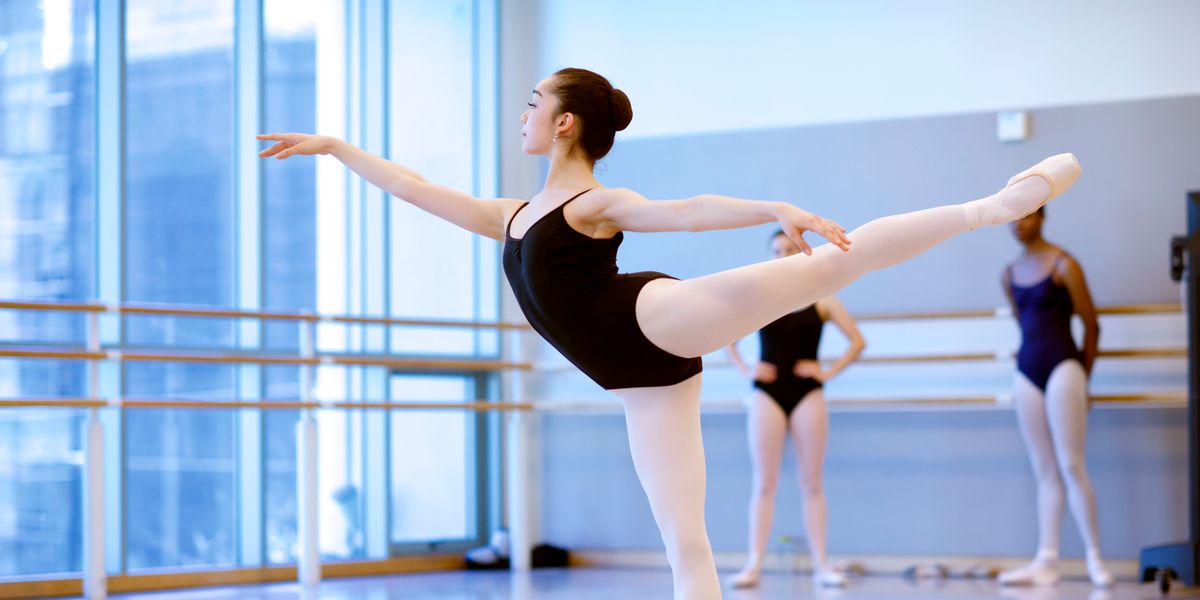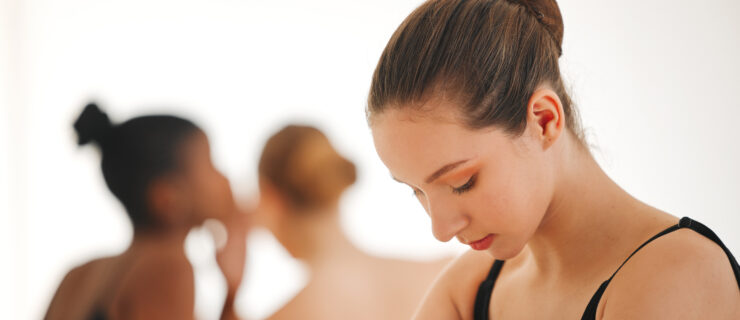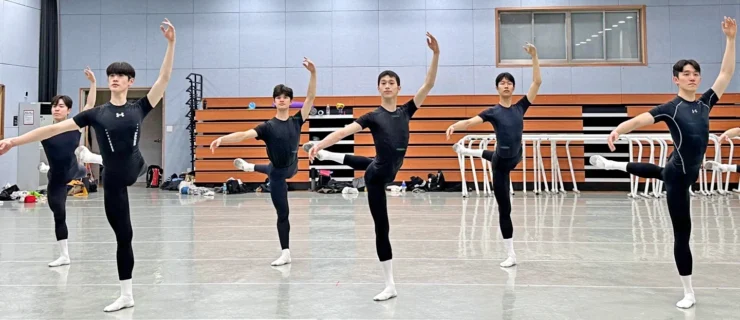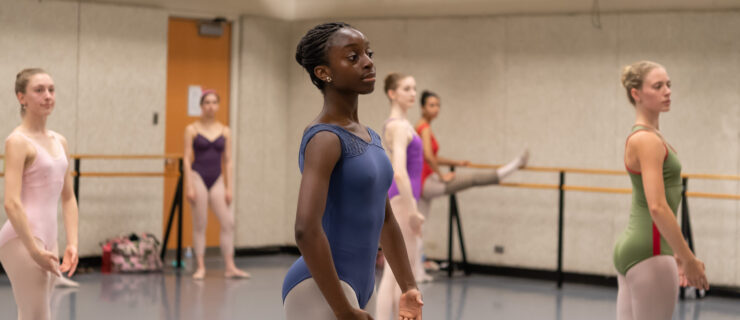The Anatomy of Arabesque: Why Placement and Turnout Are Key to Achieving This Crucial Position
Audition for any school or company, and they’ll likely ask for a photo in arabesque. The position not only reveals a great deal about a dancer’s ability, but it is also a fundamental building block for more advanced movements, like penché or arabesque turn. Beyond technique, it can be the epitome of grace and elegance onstage, creating unforgettable images—just try to imagine Swan Lake or Balanchine’s Serenade without an arabesque.
Yet many dancers are unsatisfied with their arabesque lines, and students frequently ask how to improve their extensions. (Social media posts of dancers with extreme flexibility don’t help!) In an attempt to lift the back leg higher, dancers may sacrifice placement and unknowingly distort their position in the process. How can you improve the height of your back leg while maintaining proper placement and turnout? We talked to a few experts to better understand the science behind this step.
What Muscles Do I Use?
In order to achieve a 90-degree extension, the muscles in the hips and spine must lengthen and stretch. “The hip extensors (glutes and hamstrings) and back extensors (muscles that hold your back into an arch) are the primary muscles to hold the back leg into arabesque, but it is also important to remember the deep hip-turnout muscles to control rotation of your hip,” says Julie Daugherty, MPT/CMPT and physical therapist for American Ballet Theatre.
When in arabesque, the standing ankle and knee should remain still as the working leg lifts—the hip joint initiates the range of motion. “The stability and strength of the standing leg is essential to give a strong base of support,” says Daugherty, while properly aligning the standing knee and foot is crucial for maintaining hip placement.
Why are some dancers able to lift the back leg effortlessly, while others struggle? Daugherty points to a variety of factors, including anatomical limitations in the spine or hip (“both bony and ligamentous,” she explains), tight anterior hip ligaments or groin muscles, and muscle imbalances or weaknesses. It’s not enough just to stretch—improving your arabesque height requires attention to both strength and flexibility. (For a targeted conditioning routine, click here.)

What Makes a Good Arabesque?
“I prefer to see a beautiful and tasteful line to a distorted one,” says San Francisco Ballet School instructor Anne-Sophie Rodriguez. “It all begins and ends with the supporting leg and hip. When the turnout is held, which results in the standing hip being squared off, we can build up to a high arabesque that is elegant as well as healthy and helpful for our technique.”
When dancers apply to the ADC|IBC, they must submit an arabesque photo for a panel of judges to review. Audrianna Broad, ADC|IBC’s founder and president, says the photos are used as “a supplement to help determine suitability for programs, largely because the position is very telling of the dancer’s current level and training background.” She adds: “First arabesque is introduced relatively early on to students, and yet it is one of the most difficult positions to execute properly.”
As for what Rodriguez looks for, she says, “the awareness needs to be on keeping the pelvis/hip complex lifted so the pelvis doesn’t tilt more than necessary for each dancer’s specific anatomy.” She continues, “Squaring the ribs to the front and anchoring the supporting shoulder down and back are the next steps I would suggest working on.”
Then there is the energy Rodriguez says should be radiating through the body: “Down into the floor, forward through the eyes and fingers of the front hand, back through the foot and back, and back/side through the side arm.”

Common Mistakes
Many dancers place too great a value on the height of the leg and end up distorting their line by allowing the hip to lift and open. “Students and professionals alike are forgetting that any position begins with the placement of the standing leg,” notes Rodriguez.
When viewing competitor photos, Broad has similar feedback: “The vertical alignment of the standing hip is the first place my eye gravitates. If tilting occurs, I proceed to see how other regions of the body are affected.” Tilting your pelvis forward limits turnout—which can result in pronation (rolling in) on the standing ankle—and causes the shoulders and torso to twist out of alignment.
Another common mistake occurs when the back leg opens out diagonally; dancers should practice first finding their placement in tendu derrière and then lift the leg (without allowing it to drift sideways).
In the search for extension, dancers also tend to “whack” the leg up without maintaining control. “It’s important not to force the movement beyond where you can support your low back,” says Daugherty. “Crunching into the low back in order to raise the back leg higher is the biggest problem I see.” Doing so can eventually lead to serious injuries, like a stress fracture in the spine (spondylolysis), or back strains, pulled muscles and disc herniations.
The control, balance and focus needed to master arabesque are the same tools needed to succeed in all of ballet. By working with awareness and intention, dancers can work towards a higher leg while maintaining the alignment and purity of movement.






